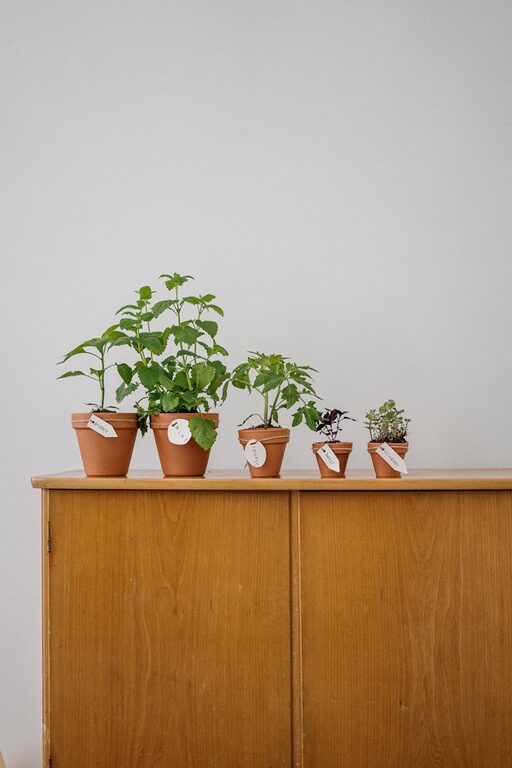Growing a small herb garden indoors is a rewarding and practical way to bring fresh flavors into your kitchen while adding a touch of greenery to your living space. Whether you have a large home or just a sunny windowsill, starting an indoor herb garden is easier than you might think. In this guide, we’ll walk you through everything you need to know to get started, including selecting herbs, choosing containers, caring for your plants, and tips for a successful harvest.
Why Grow Herbs Indoors?
Indoor herb gardens offer several benefits:
– Fresh herbs all year round, no matter where you live.
– Saves money on buying herbs from the store.
– Adds natural air purification and greenery to your home.
– Fun and educational activity for all ages.
Now, let’s get started with the essentials.
Choosing the Right Herbs
Not all herbs thrive indoors equally. Here are some of the best herbs for indoor gardening:
– Basil: Requires plenty of sunlight and warmth.
– Parsley: Prefers moderate sunlight and cooler temperatures.
– Chives: Easy to grow and tolerant of different light conditions.
– Thyme: Needs bright light and well-draining soil.
– Mint: Grows vigorously but can take over, so keep it in a separate pot.
– Cilantro: Likes cooler temperatures and bright light.
For beginners, herbs like chives, mint, and parsley are forgiving and grow quickly.
Selecting Containers and Soil
Containers
Herbs need good drainage to prevent root rot. Choose containers with drainage holes at the bottom. Popular options include:
– Clay or terracotta pots (allow air and moisture flow)
– Plastic pots (retain moisture longer)
– Recycled containers (just make sure to add drainage holes)
Size matters too: small herbs like chives do well in 4-6 inch pots, while larger plants like basil may need 8-inch or bigger containers.
Soil
Use a light, well-draining potting mix designed for indoor plants. Avoid garden soil as it can be too heavy and may contain pests or diseases.
Finding the Perfect Spot
Herbs generally require 6-8 hours of sunlight each day. A south-facing window is ideal, but east or west-facing windows can work with some adjustment.
If natural light is limited:
– Consider using a grow light with full spectrum LEDs.
– Position the light 6-12 inches above the plants, running 12-16 hours per day.
Planting Your Herbs
You can start your indoor herb garden from seeds or buy young plants from a nursery.
Starting from Seeds
- Fill your container with potting mix, leaving about an inch from the top.
- Lightly dampen the soil.
- Plant seeds at the depth recommended on the seed packet.
- Cover with soil and gently pat down.
- Keep the soil moist and place the pot in a warm, well-lit area.
- Germination may take 7-21 days depending on the herb.
- Remove the plant gently from its nursery container.
- Loosen the roots if they are tightly packed.
- Plant in your pot filled with fresh potting mix.
- Water immediately to settle the soil.
Planting Transplants
Caring for Your Indoor Herbs
Watering
Herbs like moist soil but not soggy. Water when the top inch of soil feels dry to the touch. Overwatering can lead to root rot, so ensure excess water can drain away.
Feeding
Use a balanced, water-soluble fertilizer diluted to half strength every 4-6 weeks during the growing season. Avoid over-fertilizing as it can reduce the herb’s flavor.
Pruning and Harvesting
Regularly trim your herbs to encourage bushier growth and prevent flowering (which can cause the leaves to become bitter).
– Pinch off leaves or stems just above a leaf node.
– Harvest in the morning when oils are most concentrated for maximum flavor.
– Avoid removing more than one-third of the plant at a time.
Troubleshooting Common Issues
– Yellow leaves: Often a sign of watering issues; adjust watering schedule.
– Leggy plants: Usually caused by insufficient light; move plant to brighter spot or add grow lights.
– Pests: Indoor herbs can attract aphids or spider mites. Wipe leaves gently or use a mild insecticidal soap.
Creative Ideas for Your Herb Garden
– Use a tiered shelf near a window to grow multiple herbs.
– Try herb gardening on a kitchen counter or windowsill.
– Mix herbs in decorative pots to match your home style.
– Combine herbs with small vegetable seedlings for a mini indoor garden.
Final Tips for Success
– Start small and expand as you gain confidence.
– Keep a gardening journal to track watering, light, and growth progress.
– Rotate pots periodically to ensure even sunlight exposure.
– Enjoy experimenting with different herbs and recipes!
Growing your own indoor herb garden is a fun, practical way to enhance your cooking and your home environment. With a little care and attention, you’ll have fresh greens ready at your fingertips all year long.
Happy gardening!

